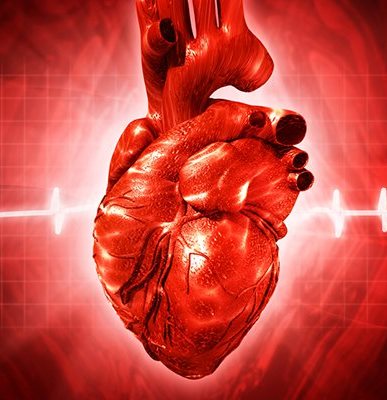
Arrythmia
The human heart beats at a particular rate and with a particular rhythm. When there is a problem in either the rate or rhythm of the heartbeat or when both are disturbed, the condition is called arrhythmia. So an arrhythmia could be due to heart beating too fast (tachycardia) or too slow (bradycardia) or with an irregular rhythm (for example extra or premature beats).
While some arrhythmias could be harmless, arrhythmias could turn serious if they affect the pumping action of the heart. To understand arrhythmia better, you need to understand how the heart works.
Electrical signals originate in a group of specialized cells called pacemaker node, located in the upper right chamber of the heart (right atrium). In a resting healthy heart, pacemaker node generates 60-100 electrical impulses in a minute. These impulses are conducted via a special conducting system to the right and left atria (upper chambers) which contract to pump blood into the right and left ventricles, respectively (lower heart chambers).
The electrical signal then reaches across and down the length of the heart and ventricles through specialized conducting pathways to ultimately activate the left and right ventricles. The right and left ventricles contract to push out blood to lungs and rest of the body, respectively. After this contraction, the ventricles relax, and a fresh impulse is generated at the pacemaker node.
9,600+
Happy Patients
10
Qualified Doctors
500+
Successful Surgeries
100+
Insurance Partners
The four main types of arrhythmia are extra or premature beats, supraventricular arrhythmias, ventricular arrhythmias, and bradyarrhythmias.
Premature Beats:
These are the most common types of arrhythmia. They are of two types depending on where the extra betas occur: premature atrial contractions (PAC) and premature ventricular contractions (PVC).
Both PAC and PVC are usually harmless, can occur without a cause or due to stress, exercise, caffeine or nicotine intake, and need no treatment. There are no signs and symptoms except a feeling of flutter in chest or extra heart beat. At times they occur in heart disease and need treatment.
Supraventricular Arrhythmias:
Supraventricular arrhythmias are basically tachycardias or tachyarrythmias originating in the atria or AV node. Examples: atrial fibrillation, atrial flutter, and paroxysmal supraventricular tachycardia (PSVT), congenital (Wolff-Parkinson-White syndrome)
Atrial Fibrillation:
In atrial fibrillation electrical impulse is generated anywhere in the atria or pulmonary veins and travels through out the atria in a disorganized manner. The atria quiver or fibrillate in a fast and irregular way instead of contracting properly.
This is similar to atrial fibrillation, except that the electrical impulses travel in an organized manner.
Atrial Flutter:
Paroxysmal Supraventricular Tachycardia:
PSVT occurs when the signals go from atria to ventricles and come back to atria causing extra beats and short spurts of very fast heart rates. PSVT can occur during physical activity or without a cause in young people. Usually it is not dangerous.
In another PSVT type in Wolff-Parkinson-White syndrome, electrical impulses travel from the atria into the ventricles along an extra pathway as well.
Ventricular Arrhythmias:
Ventricular arrhythmia start in the ventricles, are usually serious and require urgent medical care. They occur in heart attack, coronary heart disease, and conditions causing weak heart muscles. There are two main types of ventricular arrhythmias:
In addition to above mentioned causes, it can occur if you suffer from potassium, calcium, and magnesium imbalance due to kidney disease or as effect of certain medications.
Bradyarrhythmias:
Bradyarrhythmias are heart rates slower than 60 beats per minute. This can be a normal finding in active adults. However, bradyarrhythmia can occur due to electrolyte imbalance, heart attack, underactive thyroid or use of drugs such as beta blocksrs, digoxin, calcium channel blockers.
Arrhythmias occur if there is a block or delay in the electrical pathways, irregular signal generation from pacemaker node, irregular impulse conduction or due to impulse generation in any part of heart except the pacemaker node. This could happen:
Arrhythmias can occur without signs and symptoms or cause mild ones such as:
Serious symptoms of arrhythmia include:
It is often difficult to diagnose arrhythmias as their symptoms occur once in a while and may be difficult to detect. Your doctor can diagnose arrhythmia by taking your medical and family history, doing a physical examination and certain tests.
Medical and Family Histories
Your doctor would:
Physical Examination
During your physical examination, your doctor may:
Diagnostic Tests and Procedures
Main Tests
Other Tests
Your doctor may or may not opt for these tests depending on your symptoms.
Arrhythmias which cause symptoms and are serious can be treated with medication, medical devices and procedures, surgery and Vagal maneuvers. Serious arrhythmias are those which are likely to cause complications like stroke, heart failure and sudden cardiac arrest.
Medicines
Medications used to treat arrhythmias are called antiarrhythmics. Some of these medications have serious side effects. You must take the medications as prescribed. Ask your doctor about their potential side effects. You must also immediately report any new symptom or recurrence of an old symptom.
Antiarrhythmic medications can:
Apart from antiarrhythmics, your doctor may prescribe blood thinners or medicines to control thyroid disorders.
Medical Devices and Procedures
Surgery
Coronary artery bypass surgery is done to if coronary heart disease is the cause of arrhythmia. This surgery improves blood flow to the heart and prevents arrhythmia.
Vagal maneuvers
Simple exercises can slow down or stop abnormal heart rhythms by affecting the Vagus nerve. However, please do not do these exercises without consulting your doctor.
Vagal maneuvers which can help are: